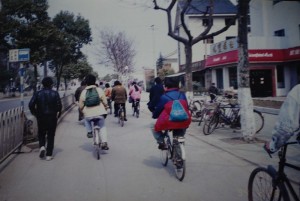 When China announced earlier this month that it would use about 43 billion euros to reduce air pollution in 2015, the Danish authorities saw an opportunity to enter in action in order to do business with China.
When China announced earlier this month that it would use about 43 billion euros to reduce air pollution in 2015, the Danish authorities saw an opportunity to enter in action in order to do business with China.
The Danish Trade Minister Pia Olsen Dyhr (Socialistisk Folkeparti), said that if China wants to successfully reach it’s goals, it should consider Denmark as an inspiration and example, as well as a possible investment.
The minister said that despite the tendency of the Chinese to buy domestic products, Denmark could be of assistance for China in the field of ecology, which would at the same time allow the small Nordic country to create business links in China.
A Danish company that has already done business with China is Haldor Topsøe, a catalyst company that provided the catalytic converters for the buses used during the 2008 Olympic Games. The company has also helped Chinese diesel engine producers to fulfill the heightened environmental requirements imposed recently by the Asian country.
The Danish Minister emphasized the skills and knowledge of Denmark in the latest technologies in increasing energy efficiency and reducing air pollution such as filters, catalysts, efficient boilers and the correct functioning of district heating systems.
Dyhr’s position was supported by the climate minister, Martin Lidegaard (Radikale), who was recently in China to meet with government officials and leaders in the energy sector. He said that Denmark can build in a sustainable way, carry out reforms and deliver building materials which are favorable to energy efficiency.
This year, the Chinese President Hu Jintao made his first visit to Denmark and the Danish Prime Minister Helle Thorning-Schmidt (Socialdemokraterne) did also an official state visit to China, which tells of the increasing relations between the two countries.
In fact the Danish exportation to China grew by 20% this year.
The recently announced objectives against pollution in China aim to reduce the level of harmful particles in 117 cities with a minimum of five percent in 2015.







